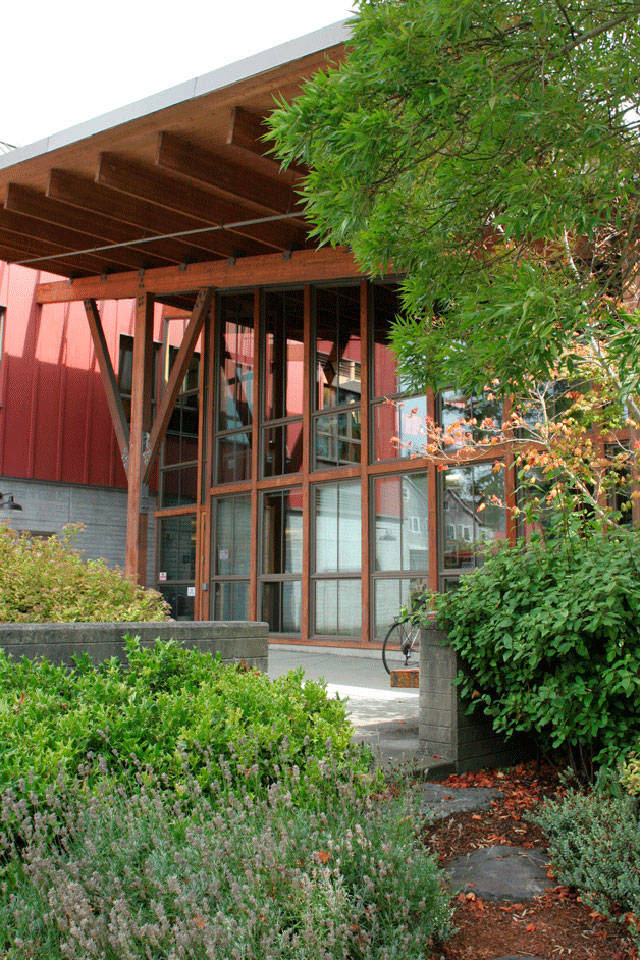The Bainbridge Island City Council voted 6-0 Tuesday for a six-month building ban on Bainbridge.
The vote on the moratorium against accepting applications for certain development projects came after a closed-door executive session between the council and its legal staff just before the start of the council’s Jan. 9 meeting.
City officials said the time-out was needed due to the ongoing and incomplete work on Bainbridge’s critical areas ordinance, the set of rules that dictates how properties that have environmentally sensitive features such as steep slopes and wetlands can be developed.
Officials also said the time-out was needed because growth and development is causing “adverse impacts” under the city’s existing regulations and “requires immediate attention by the council and city staff.”
The ban on accepting some development applications was passed by the council without a public hearing.
A public hearing on the moratorium has now been scheduled for 7 p.m. Tuesday, Feb. 13 during the regular city council meeting.
Some permits will not be held up by the building ban.
Those include projects that have already been “vested” by the city and are already in the processing pipeline with complete applications.
The moratorium also does not cover any permits or approvals for city projects, as well as permits sought by other government agencies or those enacted through Bainbridge City Council legislative actions.
The ban was the idea of Councilman Ron Peltier.
That the moratorium came without warning was intentional, he said.
“Otherwise, you get people rushing to submit applications — which defeats part of the purpose,” Peltier said.
Work on the moratorium has been underway behind the scenes for weeks now.
“I’ve been working on it for the past month,” Peltier said, adding that one of the primary reasons for the time-out was to complete the update to the city’s critical areas ordinance and get it in place.
Councilman Matthew Tirman noted Thursday that other cities in Washington have also recently adopted moratoriums.
“Moratoriums have been used by other municipalities around the region, Issaquah and Sammamish as of late, to allow local government’s a chance to rethink development guidelines with community input, without the cloud of new development permits that may run counter to new laws being considered,” Tirman said in an email to the Review.
He said there were two big reasons for the moratorium:
“Address longstanding resident concern over the rapid development of subdivisions on the Island. As part of our legally mandated work plan by the state, we will tackle a new subdivision and design ordinance likely in February.
“Allow a pause in new applications and building permits to ensure we can work diligently to pass a new subdivision ordinance and our critical areas Ordinance over the next few months.”
Tirman added: “We’ve largely exempted single-family residences except for certain cases where single-family permits are used to clear multiple lots.”
City council members approved a set of four reasons why the moratorium was necessary, including the loss of trees on the island, as well as the lack of affordable housing.
According to the moratorium ordinance, the impacts from growth and development include:
“Threatened harm to Bainbridge Island’s fresh water aquifers due to continued clearing of native forests and vegetation, as well as disturbance of native soils, which activities are currently being addressed through the city’s critical areas ordinance update process; and
“The loss of trees, forests, native vegetation, and soils, along with the full range of important ecosystem services and values that they provide to the community, as expressed, for example, by the city council in the city’s Comprehensive Plan, as well as concerns expressed by the Planning Commission, Design Review Board, and the Ad Hoc Tree/LID Committee; and
“Compliance with design review standards, including as relates to, for example, Policy LU 6.8 of the city’s Comprehensive Plan, regarding the role of the Design Review Board, Hearing Examiner, Planning Commission, and city council in the land use development review and decision-making process, as well as related to meeting the goals of the Comprehensive Plan more generally, including its guiding principle to ‘Preserve the Island’s special character,’ as well as other principles; and
“Serious challenges promoting affordable housing in a manner consistent with the city’s Comprehensive Plan.”
City officials said the moratorium would take effect immediately because “a public emergency exists.”
The city will still issue permits for some development activities, even with the moratorium in place.
Those include:
• Permits and approvals for government facilities and structures, including for facilities and structures of municipal corporations and special purpose districts;
• Permits and approvals for alterations or remodels to existing buildings that do not require a site assessment review;
• Permits and approvals for emergency repair or construction necessitated by a hazardous event or natural disaster;
• Permits and approvals for affordable housing projects;
• Permits and approvals for septic maintenance and repairs, hazardous tree or invasive plant species removal, demolition, boundary line adjustments, wireless communication facilities and overwater structures allowed under the city’s Shoreline Master Program;
• Building permit applications for complete site plan applications and other complete land use applications that had been submitted prior to Jan. 9;
• Building permit applications for single family residences in the R-0.4, R-1, and R-2 zones, for single family residences that are not part of an approved subdivision, provided that the applicant owned the property as of Jan. 9 (the applicant can only use this exclusion once);
• Building permit applications for a single-family residence in a zone other than zones R-0.4, R-1 and R-2, provided that the building permit application for the single-family residence is not for a permit that is part of an approved subdivision; and
• Building permit applications for single family residences that in addition to fully complying with the current critical areas ordinance, certify that they will also voluntarily comply with the proposed critical areas ordinance (certain conditions must be met to be eligible for this exclusion).



